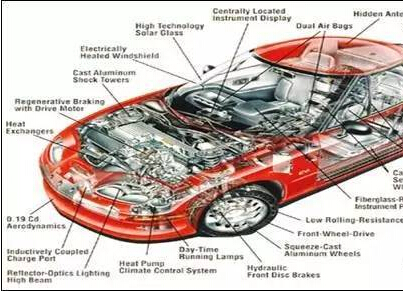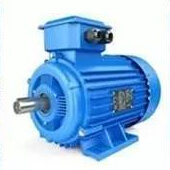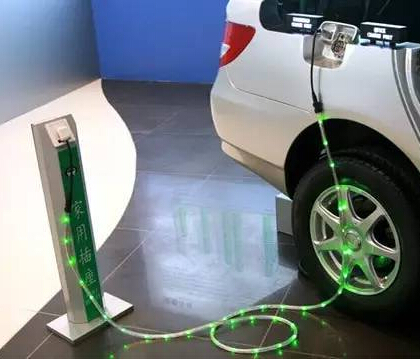For the capital and technology-intensive new energy automobile industry, this year, with the country's gradual decline in subsidies for new energy vehicles and higher standards, many car companies relying on state subsidies have begun to struggle. Because of the delay in the state subsidies, the lag of the overall technology of the car has caused some companies to lose the courage and funds to continue to invest, or simply suspend production and rectify the tolerance of waiting for national policies, or leave the entire vehicle sector to other areas.
On the one hand, it is the confusion and helplessness of the suspension of production, but on the other hand, it is the expansion of the new energy vehicle market. The development of new energy vehicles in China is still tending to rise. The August data given in the article shows that the production and sales volume of new energy vehicles in China is 99,000 and 101,000, respectively, an increase of 39 over the same period of the previous year. % and 49.5%; from January to August, the production and sales of new energy vehicles completed 607,000 and 601,000 respectively, an increase of 75.4% and 88% respectively over the same period of the previous year. In August, all types of cars in China produced 2 million vehicles, down 4.4% year-on-year, and sold 2.103 million units, down 3.8% year-on-year. Therefore, in the context of the decline in the overall sales of gasoline vehicles in China, the sales volume of new energy vehicles continues to rise. The reason is that in addition to policy incentives and subsidies, there is another factor, that is, although the number of new vehicle manufacturing enterprises is small, the overall production scale of the company has gone up. By deleting the number of enterprises and increasing the scale of production capacity of enterprises, isn’t this the picture that the country wants to achieve?
From the long-term perspective of the country, the development of new energy vehicles is of great significance. According to experts, the production and sales of new energy vehicles are expected to reach 1.5 million this year. Although this amount of new energy vehicles can not be compared with the sales of gasoline vehicles, but in the face of about 780,000 sales last year, it is double the size! According to experts, by 2020, the number of new energy vehicles in China will reach 5 million. According to this figure, there is a huge market demand for new energy-powered vehicles in the future. However, in the face of a good market momentum, we must also clearly understand the "bottleneck" problem of the current new energy vehicles, and unite all the enterprises, governments, and research institutes in the industrial chain, and solve them through unified planning and coordination.
One of the "bottlenecks" is the country's policy orientation. As a strategic emerging industry that has emerged from a new era, the new energy automobile industry is actively developing new energy vehicles in the development of the world. It is reported that this industry will become the next high-tech high point. From the perspective of China's own national conditions, the large population, tight resources and increased pollution have determined that China must limit the scale of development of traditional fuel vehicles. New energy vehicles are the only optional “path”. Therefore, internal and external factors determine that China's development of new energy vehicle industry is imperative. However, in the past, due to lack of experience, not too far-sighted, the threshold for manufacturing new energy vehicles is not high, resulting in a booming group, the new energy vehicle industry has been blindly expanding, and investment is overheating. Some cities have one or two new energy vehicle manufacturers, and The standards vary from manufacturer to manufacturer and core technologies are missing. These enterprises have adopted low-quality and low-price competition to disrupt the market and have affected the overall level of industrial development. The generous policy support given by the state has not achieved the best results. To this end, the future development path must be "supporting and strengthening". The state's subsidy policy should truly "grow the pepper noodles" to focus on the key points and achieve "ride the horse, send a ride", and then eliminate some low-level new energy vehicle manufacturers, so that some new energy auto companies in the " “Hungry” has risen to stimulate innovation in the field of new energy vehicles and keep R&D and technology at the same level as the world.

The second bottleneck is the lack of technological innovation capabilities. At present, China's new energy vehicle development will not only face the competition of traditional fuel vehicles, but also compete with foreign new energy vehicles. From the perspective of the world's overall manufacturing technology, the lithium-ion battery for vehicles that has been recognized and accepted by everyone has not yet made a fundamental breakthrough. Even the US Tesla electric vehicle still has bottlenecks in battery storage, safety and driving mileage. . As far as domestic confusion is concerned, in addition to the core problem of short battery life, some key components such as high-speed bearings and control chips in electric drive systems are still subject to people, relying on imports from abroad and becoming foreign manufacturers. Neck" technology. In addition, the reliability, handling and brand reputation of the new energy vehicles we produce are obviously insufficient, and the profitability, independent innovation capability and comprehensive competitiveness of the industrial chain are weak. It can be said that this is the pain point of the development of China's new energy automobile industry, and it is also difficult. To this end, the path we need to choose is to learn the technology in a down-to-earth manner. We must take every step seriously and focus on promoting new energy auto companies to accelerate technological innovation, promote the improvement of vehicle manufacturing quality and enhance the attraction of advantageous enterprises. Guo Hua, deputy general manager of Henan Lithium Power Co., Ltd., said: "New energy vehicles are competing for full market competition. They must understand the advance and retreat in the face of national interests. On the external strong 'invasion' path, more is to strengthen each other. The integration of technical resources will enable joint research, mutual enemies, and sharing of results, so that we can make progress together."
The construction of the “bottleneck” three charging infrastructure lags behind. Infrastructure is vital to the development of the electric vehicle industry. The popularity of charging stations and charging piles determines the degree of promotion of new energy vehicles. With the further expansion of the manufacturing scale of new energy vehicles, the construction of infrastructure such as charging piles has become a new energy source. The biggest bottleneck in car expansion. In general, traditional fuel vehicles can only run for hundreds of kilometers in just a few minutes, and new energy vehicles are charged at least for hours, which is very inconvenient. Of course, the charging facilities are complete and the vehicle and charging facilities are matched. Underneath, there are often times when the car is out of power and wants to charge. There is no place to charge anywhere. At present, China still lacks a master plan for the infrastructure layout of new energy vehicles. The charging piles for parking spaces for the majority of private consumers are progressing slowly. Although some cities have built some charging piles, the layout is not reasonable and the utilization rate is not high. . Mao Baoguo, CEO of Shenzhen's tram resource network, said: "Our new energy-powered car sales are exponentially growing, and the construction speed of charging facilities is far behind the growth rate of new energy vehicles. Nowhere to charge new energy vehicles. The embarrassment, many people gradually shift the enthusiasm for the consumption of new energy vehicles from the beginning to the calm at the time of purchase. Therefore, to develop new energy vehicles, not only to build factories to produce cars, but more importantly, the 'path' is perfect. Good infrastructure, from the 'software' and 'hardware' aspects of the construction of charging piles, charging stations, after-sales service stations and other supporting facilities, creating a broad path for the 'running roads' of new energy vehicles.
















 RCCN WeChat QrCode
RCCN WeChat QrCode Mobile WebSite
Mobile WebSite







